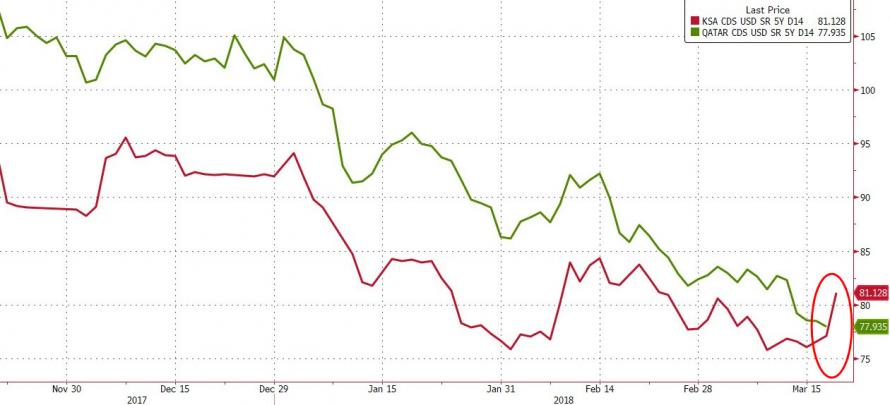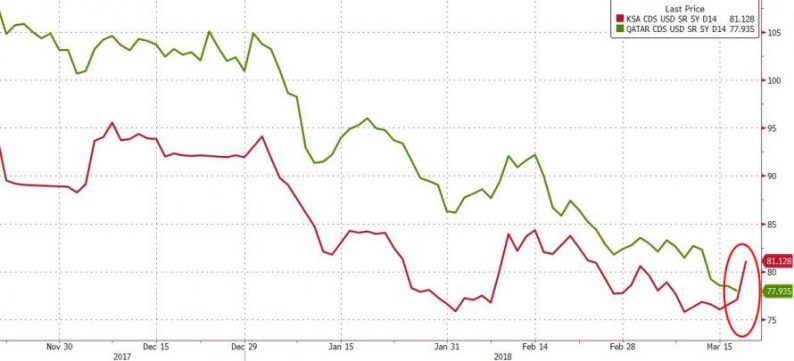The last few days have seen CDS rise across the middle-east, as Saudi Arabia’s domestic crises which prompted the reform drive will continue to stifle Riyadh’s progress in the Vision 2030 project launched by Crown Prince Mohamed Bin Salman, according to the Financial Times.
For the first time since July 2017, Saudi credit risk is higher than Qatar credit risk…

As Middle-East Monitor reports, one of the main reasons which promoted Bin Salman to steer the Kingdom towards a new direction was the boom in US shale gas which threatened to depress oil prices around the globe and forced the forced Riyadh to confront its own economic dependence on oil.
The last big drop in oil price seen in 2014 forced major oil-producing country’s to reduce output. The decision was a reaction to the oil glut but it was also a desperate attempt to snuff out new challengers like US shale gas, which had a higher break even cost and needed oil to be at a higher price to survive in the congested market.
While US shale boom was stopped in its tracks, it is beginning to grow faster and stronger as oil price recovers.According to the FT “the rebound in crude prices to over $60 a barrel has brought shale oil producers roaring back to life again, but the industry has not simply returned to where it was before the collapse. Geographically and technologically, it has evolved, and the companies that have survived are more capable, more efficient, and better able to survive lower crude prices”.
This presents a big dilemma for the Saudi’s who according to industry experts have little room for maneuver. The Kingdom may have boasted that it could survive if oil price went down to $20 dollars a barrel a few years ago but that no longer seems to be the case.

Riyadh is banking its future on raising funds from the Aramco sale – which is now reportedly delayed once again. Its $2 trillion estimated of the value of the oil company is said to be over-optimistic especially during uncertainty over oil price. Bin Salman’s vision requires oil price to recover in order to increase the valuation of the initial public offering of state oil company Saudi Aramco. But higher prices, industry experts point out, can bring shale supplies back even stronger.











Leave A Comment